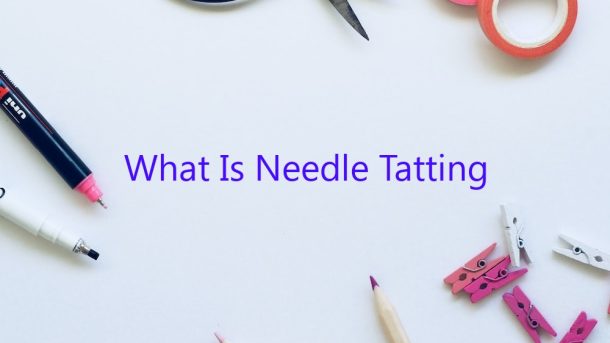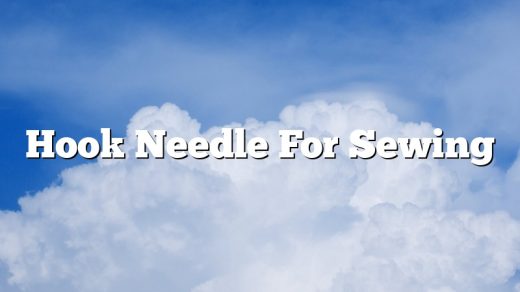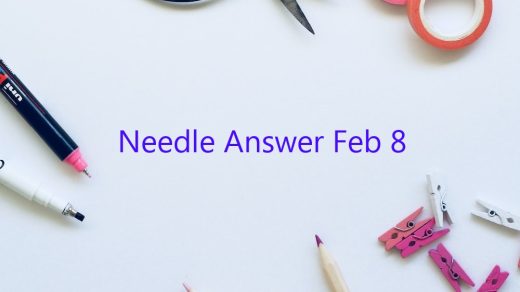What is Needle Tatting?
Needle tatting is a form of tatting that is done using a needle instead of a shuttle. This type of tatting can be done using either a needle threader or a needle with a large eye. Needle tatting can be done using either a continuous thread or a bobbin.
When using a continuous thread, the thread is wrapped around the needle a certain number of times to create a loop. The thread is then passed through the loop to create the next stitch. When using a bobbin, the thread is wrapped around the bobbin a certain number of times to create a loop. The thread is then passed through the loop to create the next stitch.
Needle tatting can be used to create a variety of different designs. Some of the most common designs are doilies, edgings, and centerpieces.
Contents
What is the difference between needle and shuttle tatting?
There are two main types of tatting: needle tatting and shuttle tatting. Shuttle tatting is the more traditional form, and involves using a shuttle to weave the thread around the stitches. Needle tatting, which was developed in the early 20th century, uses a needle to make the stitches.
There are a few main differences between needle and shuttle tatting. The first is that shuttle tatting is a lot slower than needle tatting. This is because the shuttle needs to be passed back and forth between the hands, which takes time. Shuttle tatting also tends to be more sturdy than needle tatting, as the stitches are held together more tightly.
Needle tatting is generally considered to be a bit more delicate than shuttle tatting, and is often used for more intricate designs. It is also a bit faster than shuttle tatting, as the stitches are made quickly and easily with a needle.
What is the difference between crochet and tatting?
Crochet and tatting are two very different types of needlework. Crochet is a type of fabric that is created by looping yarn or thread with a crochet hook, while tatting is a type of lace that is made from a series of knots and loops.
One of the main differences between crochet and tatting is the type of needle that is used. Crochet is done with a crochet hook, while tatting is done with a tatting shuttle. A crochet hook is a long, thin, hooked needle that is used to pull loops of yarn or thread through other loops, while a tatting shuttle is a small, thin, pointed shuttle that is used to shuttle thread back and forth between the fingers.
The stitches that are used in crochet and tatting are also different. Crochet stitches are typically made by pulling a loop of yarn through another loop, while tatting stitches are made by tying knots and loops together.
The end result is also different. Crochet fabric is typically a solid piece, while tatting lace is typically a series of openwork panels.
Crochet is a very popular craft, and there are many different stitches that can be used to create different types of fabric. Tatting is not as popular as crochet, but it is a very pretty lace that can be used to make a variety of items, such as doilies, table runners, and collars.
Why is it called tatting?
Tatting is a type of lace-making that uses a small shuttle to pass thread back and forth between two points. The word “tatting” is derived from the French word “tache” which means “stain” or “spot.” This is because early tatting was often used to repair broken lace and to hide small stains or imperfections. Tatting is a very old craft that dates back to the 1500s.
Is tatting hard to learn?
Is tatting hard to learn?
There is no one definitive answer to this question. Tatting can be a challenging craft to learn, but with practice and patience, most people can become proficient at it.
One of the main things that makes tatting difficult is the fact that it is a very precise craft. In order to create tatting patterns, you need to be able to make very small, consistent stitches. This can take some practice to get the hang of.
Another challenge that can make learning tatting difficult is the fact that there are so many different stitches and techniques to learn. Each stitch has its own unique name and formation, and there are dozens of them. It can be a lot to remember at first.
However, with a bit of practice, anyone can learn the basics of tatting. The most important thing is to be patient and take your time. The results are well worth the effort!
Is tatting easier with needle or shuttle?
Is tatting easier with a needle or a shuttle? This is a question that many tatters have asked themselves at one time or another. The answer, unfortunately, is not a simple one. It depends on your own personal preferences and skills.
Some tatters prefer to use a needle because it is easier for them to handle. A needle is also good for tatting small, intricate designs. Others prefer to use a shuttle because it is easier to keep the thread under control. Shuttle tatting also creates a thicker, more robust fabric than needle tatting.
The bottom line is that it is really up to you which type of tatting you prefer to use. Try both methods and see which one you are more comfortable with. You may find that you switch back and forth depending on the project you are working on.
What is needed to start tatting?
In order to start tatting, you need a few supplies. You will need a shuttle, thread, and a needle. You can also use a bobbin to hold the thread, but this is not necessary. The most important thing is to have a thread that is sturdy enough to hold a knot.
What yarn is used for tatting?
What yarn is used for tatting?
Tatting is a form of lace-making that uses a small shuttle to create loops and picots. A variety of yarns can be used for tatting, but some are better suited than others.
Nylon or cotton thread is generally used for tatting. Nylon thread is stronger and less likely to tangle, making it a good choice for beginners. Cotton thread is less expensive and available in a variety of colors, making it a popular choice for experienced tatters.
Some tatters prefer to use fine yarns, such as silk or cotton crochet thread, for tatting. These yarns are less bulky and easier to work with, but they are also more expensive.
Whatever type of yarn you choose, be sure to use a thread or yarn that is appropriate for the size of needle you are using.




